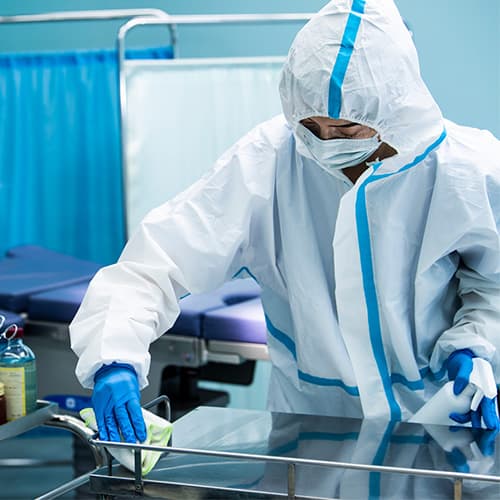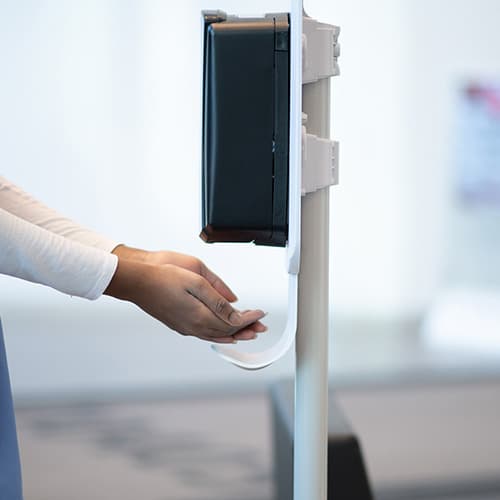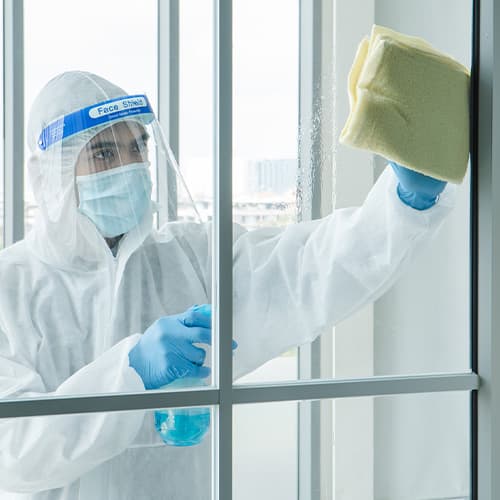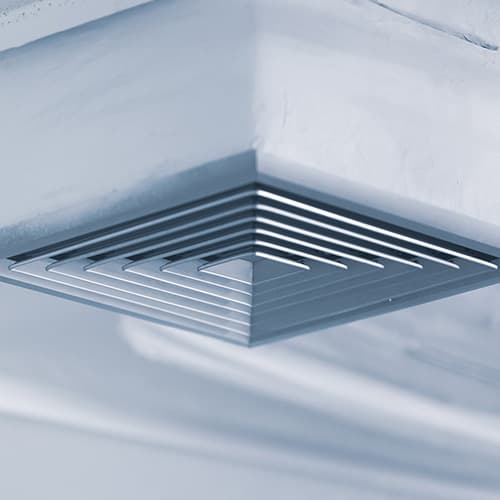It happens too often. A patient comes to a healthcare facility for treatment and ends up with a surprising consequence: a healthcare associated infection (HAI). Luckily, HAIs are preventable with the right practices and equipment. With a collaborative approach involving healthcare providers nationwide, we have some solutions to significantly reduce the risk of HAIs.
What are HAIs?
Healthcare-associated infections (HAIs) occur across diverse healthcare facilities such as hospitals, ambulatory surgical centers, end-stage renal disease facilities, and long-term care facilities. These infections are caused by bacteria, fungi, viruses, or other pathogens. HAIs can have devastating consequences, leading to illness, death, and substantial financial burdens on the healthcare system.
According to the U.S. Department of Health and Human Services (HHS), approximately 1 in 31 inpatients experience an infection related to hospital care at any given time. These infections lead to thousands of deaths and cost the US healthcare system billions of dollars each year. This alarming statistic underscores the critical need to address and reduce HAIs. In response to this urgent call, Global Industrial has developed comprehensive solutions aimed at preventing HAIs and fostering a safer healthcare environment.
Prevention Solutions: A Holistic Approach
To effectively combat HAIs, it takes a multifaceted approach. By incorporating these data-driven pillars of preventative measures, healthcare facilities can significantly mitigate the risk of infections, contributing to better patient outcomes, and reduced healthcare costs.

Educate
It is key to cultivate a culture of safety by educating every individual working in the facility on best practices. By creating awareness about the risks associated with HAIs and imparting knowledge on how to address them, a proactive approach is established. Regular follow-up turns that knowledge into good habits. Some important topics in which to train your staff may include the proper use of personal protective equipment (PPE), the importance of vaccination, and other non-equipment-based prevention methods.

Hand hygiene
Protecting the hands is an essential line of defense in preventing HAIs. Easy access to simple hand hygiene products such as hand sanitizer dispensers, refills, and gloves can ensure that healthcare workers are being safe. In addition to equipment, implementing proper hand hygiene policy significantly reduces the risk of transmitting infections, including those associated with central line-associated bloodstream infections (CLABSIs).

Body coverage
Beyond the hands, it is important to think of hygiene from head to toe. Protective measures such as isolation gowns, disposable coverings, shields, and eye coverings are crucial in preventing the spread of pathogens and maintaining a sterile environment within healthcare facilities.

Clean environment
In addition to the body, think of the physical environment. Where in the facility can contamination occur? Knowing your space can help you stay on top of any potential hygiene issues. Cleaning equipment such as commercial floor scrubbers, tile scrubber machines, electric floor scrubbers, and other floor maintenance equipment are essential tools in maintaining a sanitary healthcare facility. These machines efficiently remove contaminants from various surfaces, reducing the risk of infections caused by environmental factors. In addition, it is smart to stock your facility with a range of cleaners, disinfectants, and sanitizers designed to meet the stringent cleanliness standards required in healthcare settings. This comprehensive approach to environmental hygiene contributes significantly to HAI prevention.

Purify the air
As COVID taught us, airborne illnesses pose a unique challenge in healthcare settings. Equipment such as air purifiers, masks, and mask dispensers can address this specific aspect of HAI prevention. Purifying the air in healthcare environments is critical in reducing the transmission of airborne pathogens, safeguarding both healthcare workers and patients.
By following preventative solutions, healthcare facilities can significantly reduce the risk of HAIs and contribute to a safer, healthier environment for patients and healthcare workers alike. When we pay attention to the body, the environment, and the air, we can do our best to prevent a bad situation from becoming worse.